WAR IN UKRAINE: Calm is an illusion in Odesa
ODESA, Ukraine — The signs of war are everywhere in Odesa, but it feels like there’s little fear of death or destruction from Russian attacks.
Air raid sirens ring out almost daily, but rocket and missile strikes largely appear to fall far from the city center — a far different reality from neighboring cities such as Mykoliav to the northeast, which suffers daily, devastating bombardment.
A little bit farther east is Kherson, one of the first cities to fall under Russian occupation over its strategic position of providing a military land- and sea-supply route from the Crimean peninsula, which has been Russian occupied since 2014.
Ukrainian forces are trying to claw back this territory since it was first seized by Russia in the earliest days of its February invasion, while resistance fighters inside Kherson have carried out high-profile attacks with car bombs targeting collaborators or Russian forces.
Odesa’s relative feeling of peace is a credit to the Ukrainian forces holding the front line outside these cities and Voznesens’k, north of Mykolaiv, said Odesa’s mayor, Gennadiy Trukhanov.
Calm is more likely an illusion, Trukhanov said in an interview with The Hill from his office in the city center, where security officials are refilling and replacing old sandbags that reinforce the perimeter of the building.
The windows of nearby museums of this town center, home to some of the most beautiful buildings of the city, remain boarded up to protect against explosions.
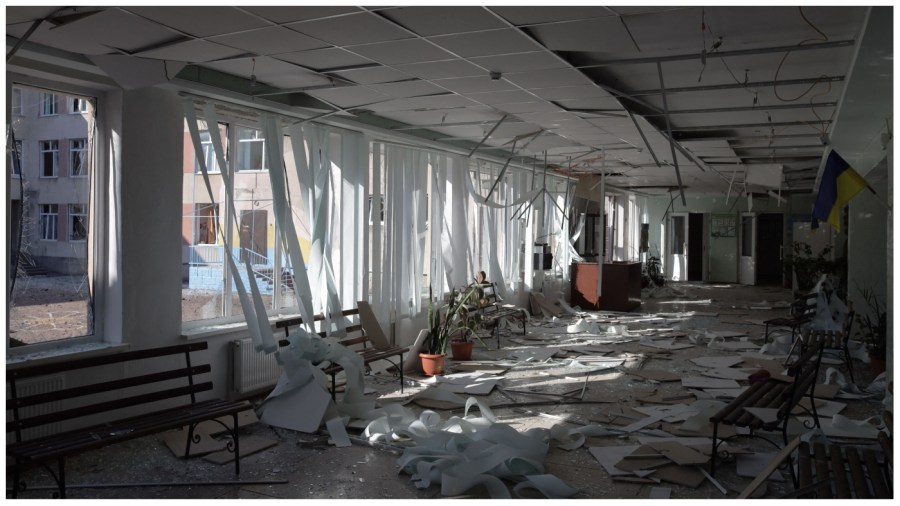
“Children, elderly, youth — all the citizens of Odesa, they live under constant threat and stress these past six months,” Trukhanov said through a translator, adding that although they can have some respite in the warm weather, with the sun shining, “they’re always reminded by the air alert that the war is still here.”
Attacks continue around Odesa — launched from Russian positions in Crimea or from its fleet in the Black Sea.
On the night of this reporter’s arrival in Odesa, on Tuesday, a Russian missile attack injured four people and set off a fire covering 600 square meters, the spokesperson for Odesa Oblast’s administration, Serhiy Bratchuk, said on his Telegram channel.
Trukhanov said that the missile strike hit a resort complex where people can rent small apartments near the sea, and part of the damage included private houses.
“Mostly they have made long-range attacks from war ships of [their] Black Sea Fleet,” Trukhanov said, adding that the Russians have also launched missiles from Crimea and through air attacks.
Another reason for the relative quiet is Russia’s agreeing to allow commercial ships to begin exporting grain from Odesa’s ports under a United Nations and Turkish-mediated agreement called the Black Sea Initiative.

Grain shipments are the top commercial export for Ukraine in general, and are the most critical commodity in global efforts to alleviate world hunger worsened by Moscow’s nearly six-month offensive war against Ukraine.
Russia, however, fired off at least one attack on Odesa shortly after the initiative was signed on July 22, despite the agreement’s parameters that “no party” would attack port facilities or ships.
Dmitriy Barinov, the deputy head of Ukraine’s Seaport Authority — the second top official overseeing more than a dozen of the nation’s ports — said the Russian rocket attack on July 23 fell just 200 meters from a train shipment terminal involved in the export of grain.
“It shows that nobody can believe Russia, no trust. But we need to work,” he told The Hill in an interview from the port authority headquarters. The streets leading to the ports are blocked by the military, with only those with official access allowed entrance.
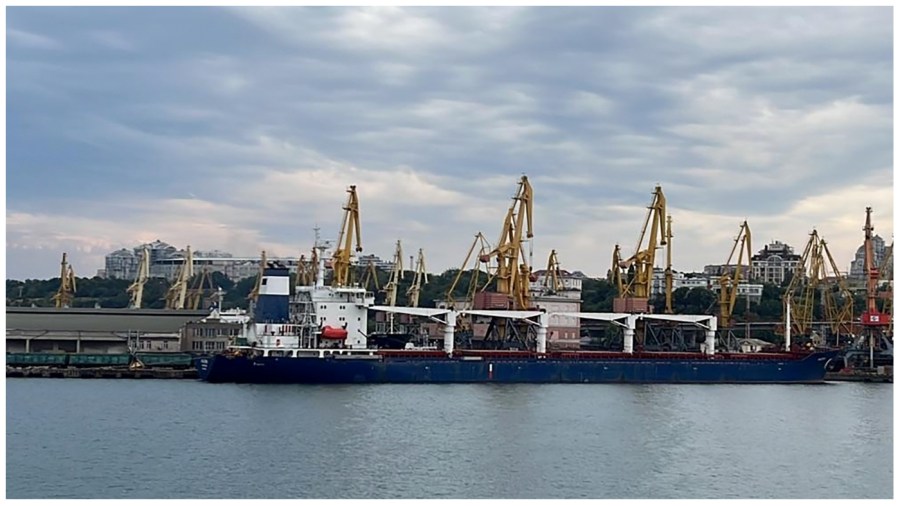
U.N. Secretary-General Antonio Guterres is expected to arrive in Odesa on Friday in support of the initiative, following meetings in Lviv with Ukrainian President Volodymyr Zelensky and Turkish President Recep Tayyip Erdoğan.
Barinov said such a high-level meeting in Lviv and the visit to Odesa should take place with a “new” announcement expanding the Black Sea Initiative to include opening Mykolaiv’s ports, which would require Russia to cease its punishing attacks on the city.
“It’s dangerous, but we still control the port and hope, maybe, some agreement will be reached and this port can start to work,” he said.
Before the war, Odesa served as a top vacation destination, with Ukrainians and Russians, as well as other Europeans and people from elsewhere, enjoying the beaches of the Black Sea.
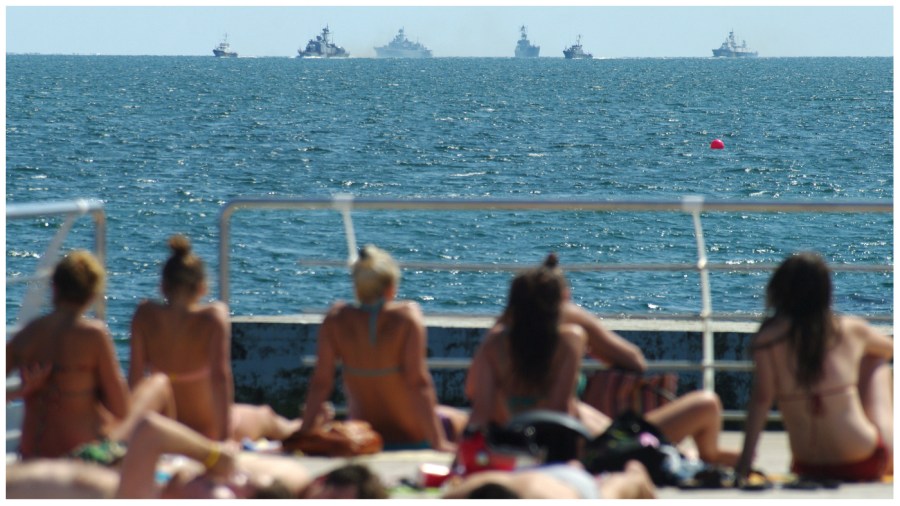
But the hotels, restaurants and city streets are largely empty of tourists. The visitors are now aid workers, journalists or internally displaced people (IDPs) — coming from places that have fallen under Russian occupation after brutal siege, including Mariupol to Odesa’s east.
Ukrainian IDPs line up in the city center for food handouts provided by the municipality, supplemented through José Andrés’s World Central Kitchen and other nongovernmental organizations. Next to the food line is a play area set up for children, shaded by a tent bearing the logo for the United Nations International Children’s Emergency Fund.
Hedgehog tank busters — the road barriers made of steel beams arranged in the shape of a jack — are pushed to the side of streets and administration buildings, to be quickly deployed if tensions and threats to the city increase.
Billboards with pictures of Ukrainian soldiers appeal to people to support the troops.
Everyday life appears to continue normally, but the war has caused unexpected interruptions.
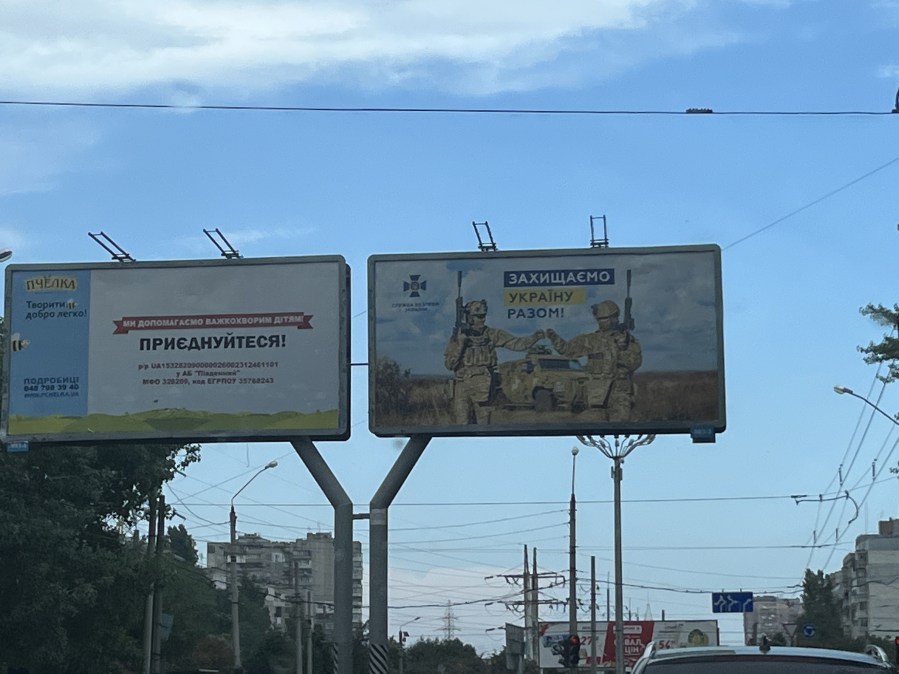
Locals not serving in the military find their own ways to contribute to the war effort, including fashion designer-turned-tactical supplier Ivan Fotesko. Stencils outlining women’s dresses line his studio’s walls even as his draft table is covered with camouflage fabric for military pants and shirts. Fotesko says that since March, he has delivered about 750 bullet-proof vests to the front lines.
Restaurants apologize that locally caught flounder is unavailable because fishermen are blocked from accessing the Black Sea, the water there mined to prevent a Russian invasion.
There are a few guests staying at the NEMO Hotel, a famous beachside resort and spa that boasts a wall of celebrity photos, including Zelensky. The guests enjoy the rooftoop hot tub before an early dinner. The city has imposed a ban on alcohol sales after 8 p.m., leading some restaurants to close early despite the city curfew taking place at 11 p.m.
The curfew ends at 5 a.m., and early risers can take the chance to steal a swim in the sea, which is generally off limits because of the dangers of floating mines.
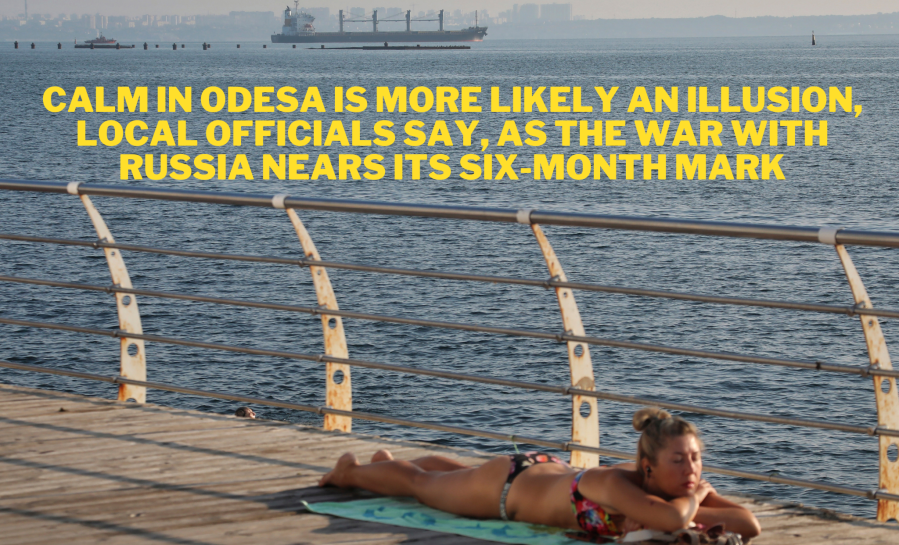
The ship Navi-Star, which sits full of corn, leaves the port in Odesa, Ukraine on Aug. 5. Ukraine is a major global grain supplier, but the war had blocked most exports, so a July 22 deal aimed to ease food security around the globe. World food prices have been soaring in a crisis blamed on the war, supply chain problems and COVID-19. (AP Photo/Nina Lyashonok)
They sneak under barricade tape — red signs with a skull and cross bones warning them against coming onto the sand — and jump in the water before the police begin their security patrols.
A few hundred feet from the water, a group of police sit at a cafe that faces away from the sea, finishing their coffee and preparing to start their day.
At the NEMO’s famed Dolphinarium, people can still pay to swim, dive or take pictures with captive dolphins. The dolphins also maintain a performance schedule of three daily shows; a sign at the ticket booth advises that sales halt when air raid sirens sound — but will continue when the all-clear is given.
The Hill’s Laura Kelly is on assignment in Ukraine.
Copyright 2023 Nexstar Media Inc. All rights reserved. This material may not be published, broadcast, rewritten, or redistributed.

